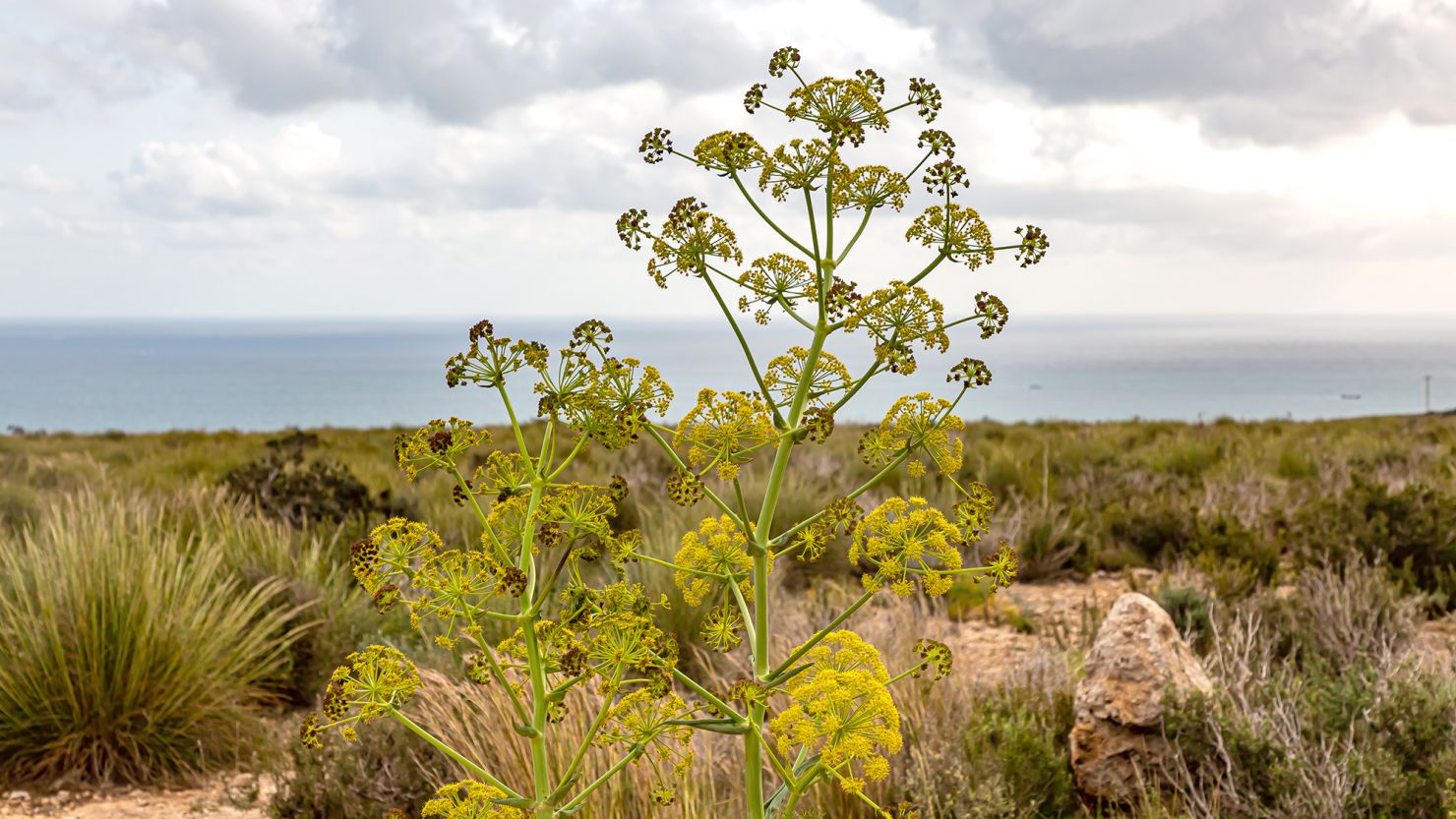An appetizer or an abhorrent? A medicine or a pesticide?
Asafoetida sounds innocent enough – it’s a wild fennel plant native to Afghanistan, Iran and Uzbekistan.
The resin from its roots is used in Indian cooking – usually after it’s ground into powder and mixed with flour. To say it has a powerful smell would be an understatement. In fact, its scent is so pungent it might just be the most divisive ingredient in the country.
‘Asa’ means gum in Persian, and ‘foetida’ means stinky in Latin. But in India, it’s just called hing.
If you accidentally get hing on your hands, it lingers no matter how many times you wash them. Put an unadulterated pinch on your tongue, and your mouth will start burning.
At the Khari Baoli market in old Delhi, for instance, hing even manages to ‘out-smell’ all the other spices.
“Hing is the mother of all base notes of Indian cooking,” say Siddharth Talwar and Rhea Rosalind Ramji, co-founders of The School of Showbiz Chefs.
“It bridged the gap of flavors of onion and garlic that were prohibited due to religious beliefs in the largely vegetarian Indian communities such as Jain, Marwari and Gujarati. Despite the culinary diversity of India, hing is a constant.”
Jains, for example, eschew onion, garlic and ginger in addition to not eating meat.
Ramji admits that the smell can be a challenge: Raw hing has been compared to rotten cabbage. It’s even been given the nickname “devil’s dung.”
But a small amount goes a long way. Talwar advises that you put a miniscule amount of hing into hot oil.
Most people buy a powdered version that is mixed in with rice or wheat flour. However, more adventurous cooks will buy the solid crystal form, which looks like rock salt.
The history of hing
Some scholars credit Alexander the Great for first bringing hing to India.
“The popular theory is that Alexander’s army encountered asafoetida in the Hindu Kush mountains and mistook it for the rare silphium plant, which has similar characteristics to asafoetida,” explains culinary historian Dr. Ashish Chopra.
“They painstakingly carried the plant with them to India … only to find out later that it wasn’t what they (expected). Nevertheless, Indians have had their encounter with hing now; it came, it saw, and it stayed.”
The professor adds that hing was used in some Greco-Roman cooking but didn’t last long. These days, it’s mostly absent from Western food, with one notable exception: Worcestershire sauce.
But as global food patterns and appetites change, some chefs are trying to remake their recipes by skipping onion and garlic in favor of asafetida.
According to Talwar, “hing can enhance the umami taste sensation essential for stews and stocks.”
“The concept of umami was first introduced by Japanese food experts, but is now the fifth base note in gastronomy after sweet, bitter, sour and salty.”
American company Burlap & Barrel even sells a Wild Hing blend made with turmeric, marketed toward people with garlic sensitivity or those following a low FODMAP diet.
But the flavor isn’t the only reason you find jars of the proverbial genie on many spice racks of the world. According to the National Library of Medicine, asafoetida has been used as a cough expectorant, an anti-spasmodic and to kill parasites or worms. Some tout it as an effective Ayurvedic remedy for stomach gas.
Furthermore, not everyone has purchased hing for the purpose of eating it.
African and Jamaican people sometimes wore amulets of asafoetida, believing it could repel demons. In 1918, in the US, some people wore sachets or bags containing asafoetida to ward off the Spanish flu.
These days, its repulsive properties are put to better use as a pesticide in organic farming.
Surprisingly, even though India is the world’s highest consumer of asafoetida, it had never been grown in the country until recently.
About three years ago, in the cold desert side of the Himalayan region, farmers announced they were trying to cultivate their own hing.
The process of growing asafoetida can be slow. But if India manages to cultivate its own, that might mean saving some $100 million per year importing the product itself.
And, perhaps more importantly, Indians could have a favorite flavor that is wholly from India.



